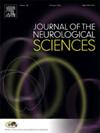Mercury concentrations in historic autopsies from Grassy Narrows First Nation
IF 3.6
3区 医学
Q1 CLINICAL NEUROLOGY
引用次数: 0
Abstract
The Asubpeeschoseewagong Anishinabek (Grassy Narrows First Nation) have been engaged in a decades-long struggle to improve their health and environment after an industrial discharge of between 9000 and 11,000 kg of mercury (Hg) into their river system. Hg concentrations in freshwater fish, central to their cultural identity, livelihood and diet, were among the highest ever reported. Between 1972 and 1992, a Canadian government program measured Hg concentrations in routine autopsies from this community. In 2017, Grassy Narrows obtained their community's autopsy reports. The present study examined the distribution of total mercury (T-Hg) and inorganic mercury (I-Hg) in brain, organ, blood, and hair samples from 21 historic autopsy reports, spanning 1976 to 1986.
T-Hg median in blood and hair were 6 ppb (range = 2.5–100) and 2.47 ppm (0.41–49.8), respectively. Hg was present in all brain regions (T-Hg median = 53 ppb, 13–299), with highest concentrations in the cerebellum (63 ppb, 16–365) and basal ganglia (58 ppb, 10–420). I-Hg constituted approximately 25 % of T-Hg in all brain regions. In organ samples, T-Hg was higher [renal medulla (290 ppb, 28–4400), renal cortex (1240 ppb, 100–6000), liver (300 ppb, 64–2400)], with greater proportion of I-Hg (82 %, 74 %, 63 %, respectively). Significant correlations were observed between T-Hg in hair and most brain regions (ρ = 0.70–0.77), blood (ρ = 0.56), and renal cortex (ρ = 0.61). While Hg accumulation in the cerebellum has been documented, the basal ganglia has seldom been an object of interest in the Hg scientific literature. The presence of Hg in the brain and other organs complement current studies on the long-term health consequences of Hg in this community. The findings further suggest the need for a closer examination of the role of basal ganglia in Hg-related disorders.
求助全文
约1分钟内获得全文
求助全文
来源期刊

Journal of the Neurological Sciences
医学-临床神经学
CiteScore
7.60
自引率
2.30%
发文量
313
审稿时长
22 days
期刊介绍:
The Journal of the Neurological Sciences provides a medium for the prompt publication of original articles in neurology and neuroscience from around the world. JNS places special emphasis on articles that: 1) provide guidance to clinicians around the world (Best Practices, Global Neurology); 2) report cutting-edge science related to neurology (Basic and Translational Sciences); 3) educate readers about relevant and practical clinical outcomes in neurology (Outcomes Research); and 4) summarize or editorialize the current state of the literature (Reviews, Commentaries, and Editorials).
JNS accepts most types of manuscripts for consideration including original research papers, short communications, reviews, book reviews, letters to the Editor, opinions and editorials. Topics considered will be from neurology-related fields that are of interest to practicing physicians around the world. Examples include neuromuscular diseases, demyelination, atrophies, dementia, neoplasms, infections, epilepsies, disturbances of consciousness, stroke and cerebral circulation, growth and development, plasticity and intermediary metabolism.
 求助内容:
求助内容: 应助结果提醒方式:
应助结果提醒方式:


